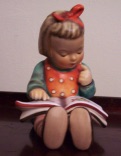Ideas for using
HOT FUDGE HERO
in the classroom
When Bertie loses his ball in old man Muckleberg's yard, his friend Isobel bets him a hot fudge sundae that he'll never get it back. But Bertie has a plan. He goes to the library and takes out a book called HOW TO MAKE FRIENDS IN FIVE EASY STEPS. Will Bertie win the bet?
In this collection of three short stories for beginning readers, Bertie learns through trial and error that making friends, playing the saxophone, and getting a strike at the bowling alley take hard work and patience - and sometimes a little magic.
Review with your students the five easy steps for making friends, found in the first story. Do they think these are good suggestions? Have your students spend one week making friends with new people. If your class keeps journals, tell them to report on each day's progress in their journals. Did they succeed at making people their friends? Ask for some reports in the classroom. Does anyone have other ideas for making friends?
When Bertie needed to learn how to do something, he went to the library. How many of your students have cards at their public library? If possible, plan a trip to the library. If that is not possible, invite the Children's Librarian to visit your classroom and tell your students about the programs and activities the library has to offer. Perhaps she can bring membership applications for students who are not members.
Illustrators sometimes use pictures to show ideas. How does Diana Cain Bluthenthal, the illustrator of HOT FUDGE HERO, show loud screechy noises in Sax Magic? How does she show sweet sounding music? Tell your students to imagine they are illustrators. Can they show fear, happiness, excitement, speed with just a few lines like Diana did? Have your students work by themselves and then share their ideas with the class. Did people have similar ideas? What other ideas can they show with a few lines?
Ask your students what is the most important thing they have ever learned. Make a list of answers on the board. Read the author's dedication and the copy on the back flap. Do your students agree or disagree that learning to read might be the most important thing they ever learn to do? If anyone disagrees, find out what they think could be more important. Ask if anyone is going to dedicate a book to you someday.
Have your students heard of Attila the Hun? He was a king who lived 1500 years ago who conquered many neighboring people in central and western Europe. His name has become synonymous with brutal takeovers. If Bertie knew this, how do your students think he would perceive Mr. Muckleberg's dog - as friendly or hostile? How about the cat Screamer/ Creamer? Do your students think that names reveal personality or characteristics about a person? Can they think of examples of people changing their names to reflect a change in how they want people to perceive them? Help them to think of examples of singers, actors, athletes, even people in the Bible.
Writers name their characters very carefully. Bertie's last name (which doesn't appear in the book) is Tunesinger. What kind of person would you expect him to be? Does his last name fit his personality?
The fairy godfather, Stan, was named after a famous saxophone player. Have your students ask some grown-ups if they can identify who it might be. If you don't own any of Stan Getz's recordings, you're missing out on a good thing. Ask your music teacher if he has any so you can share them with your class.
Stan Getz played the tenor saxophone. Saxophones come in five sizes with the tenor in the middle. Can your students identify the other sizes? Compare these names to the range of human voices in choral music. Choral music is generally written for S.A.T.B. - Soprano, Alto, Tenor and Bass. (Baritone is the missing one.)
The saxophone was invented around 1840. Can your students figure out how long ago that was? Tell them to think carefully about the name of the instrument and then make a guess at what the inventor's last name was. Tell them they should be able to figure it out if they think about it carefully. The inventor was Adolphe Sax.
What famous cartoon character plays the saxophone? Lisa Simpson.
At what sport do more Americans compete than any other? Bowling! How many of your students have played this sport? Can they identify what these terms mean; pocket, gutter, loft, split, tap, duckpins and candlepins? The answers can be found in the WORLD BOOK ENCYCLOPEDIA entry on bowling in volume 2.

